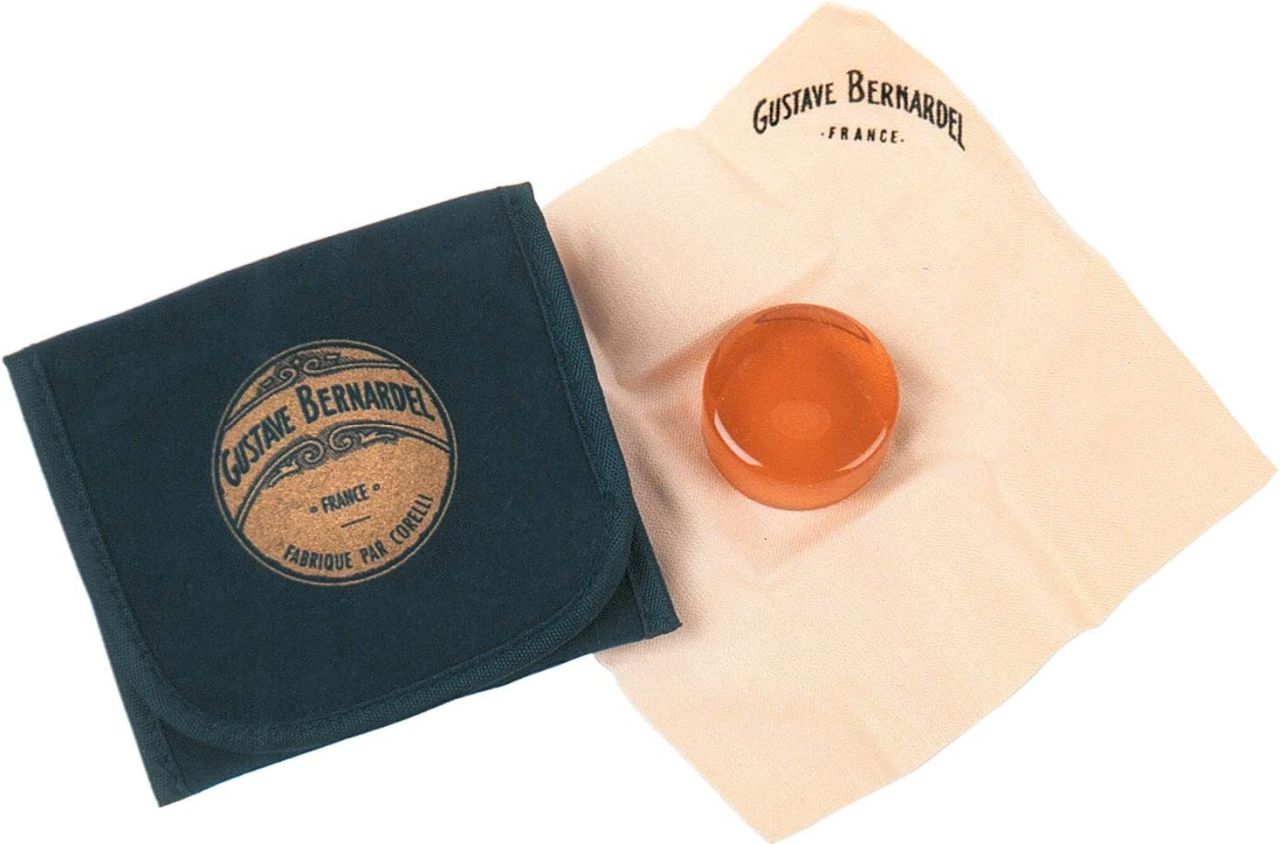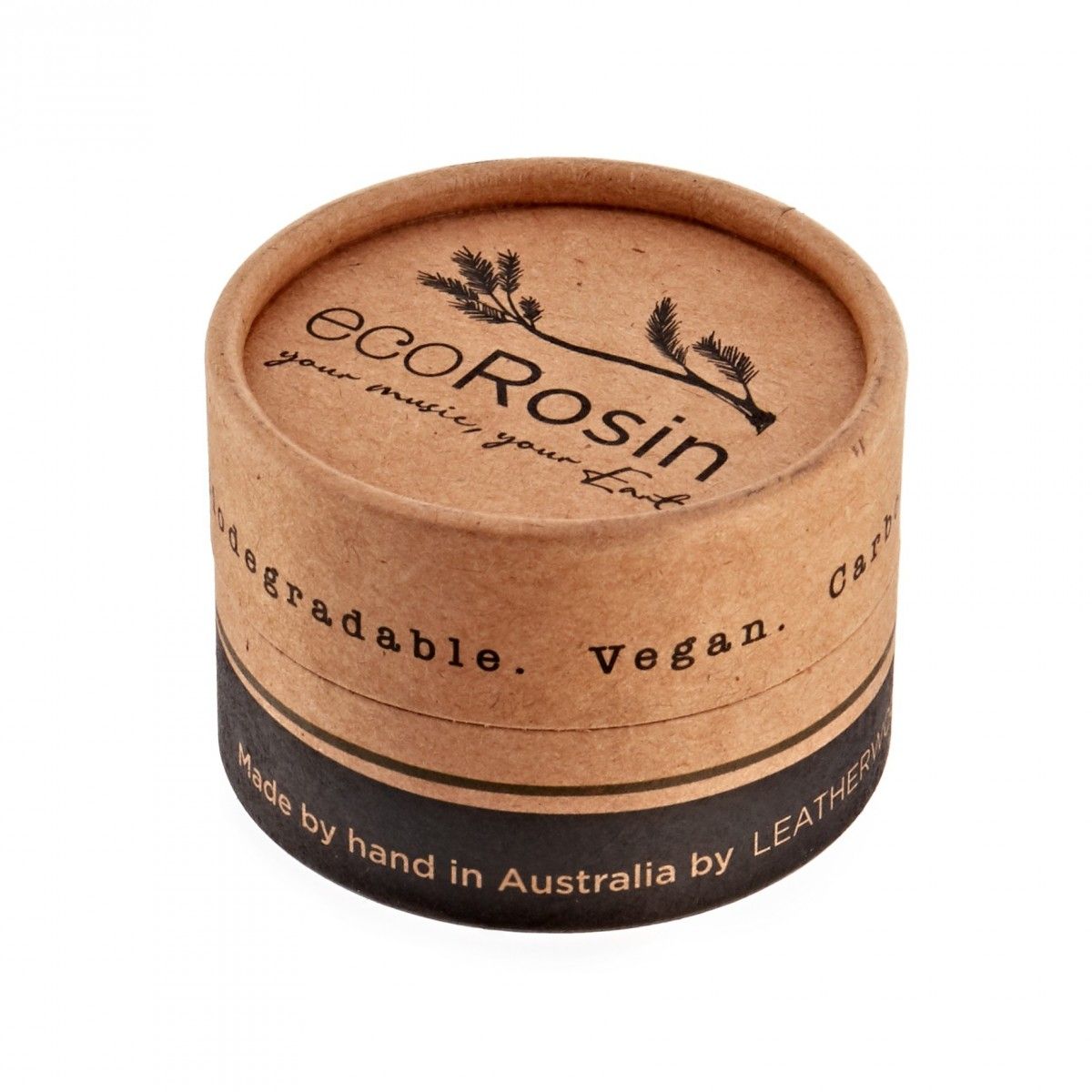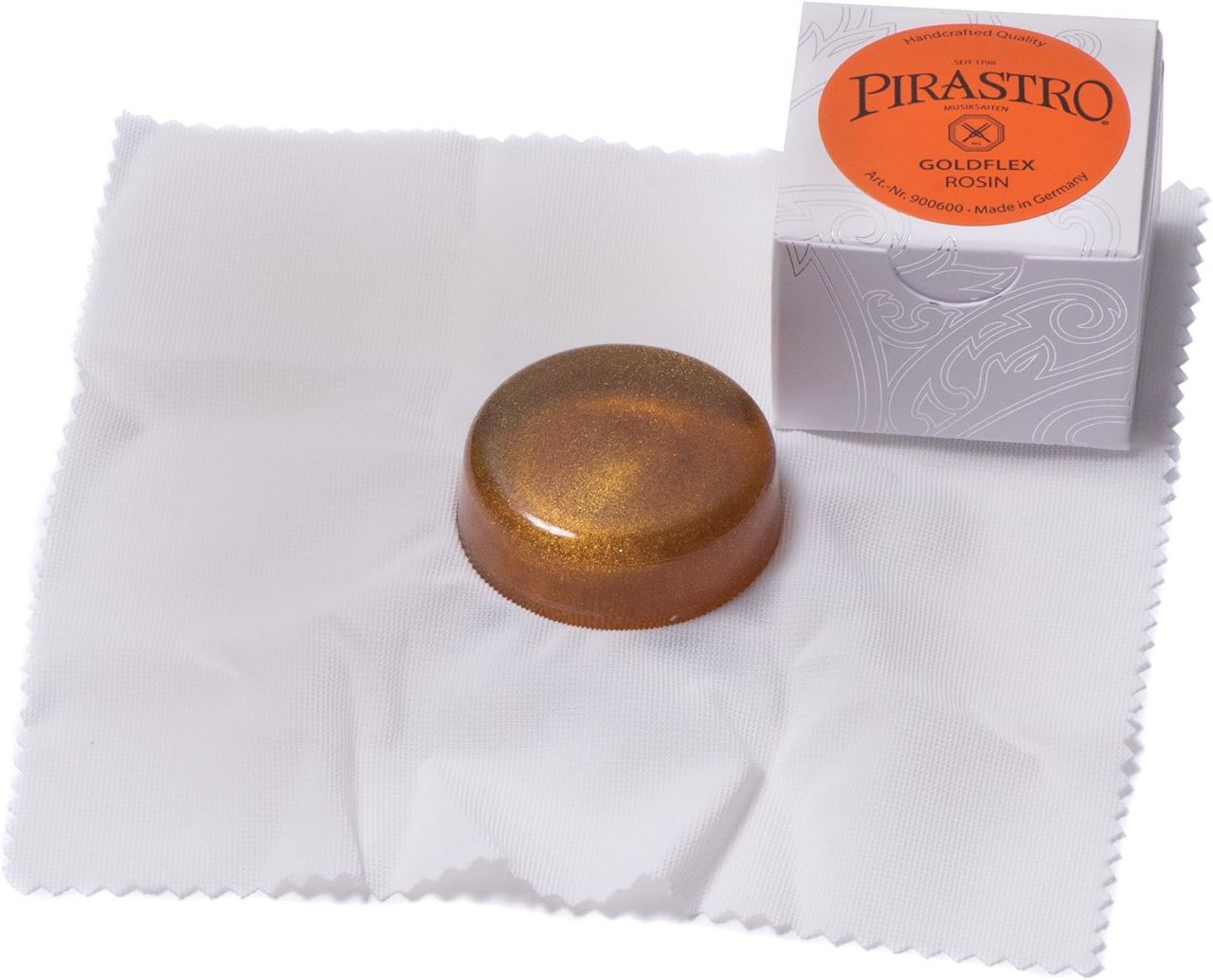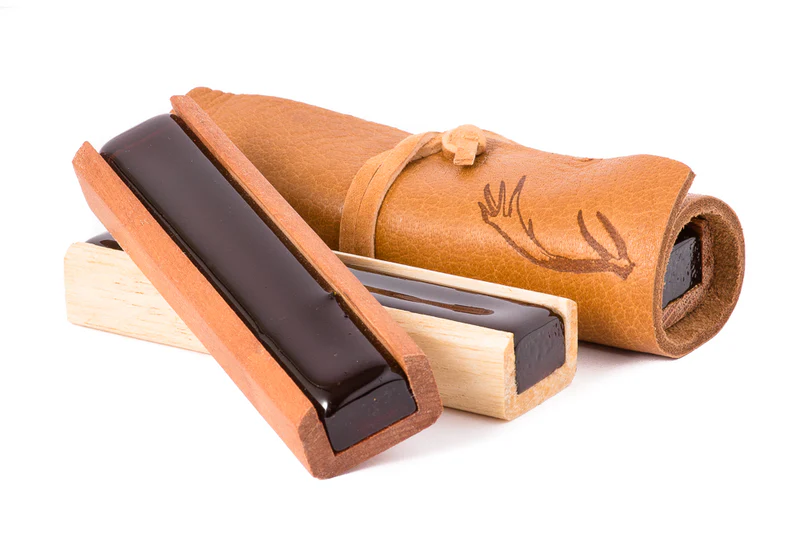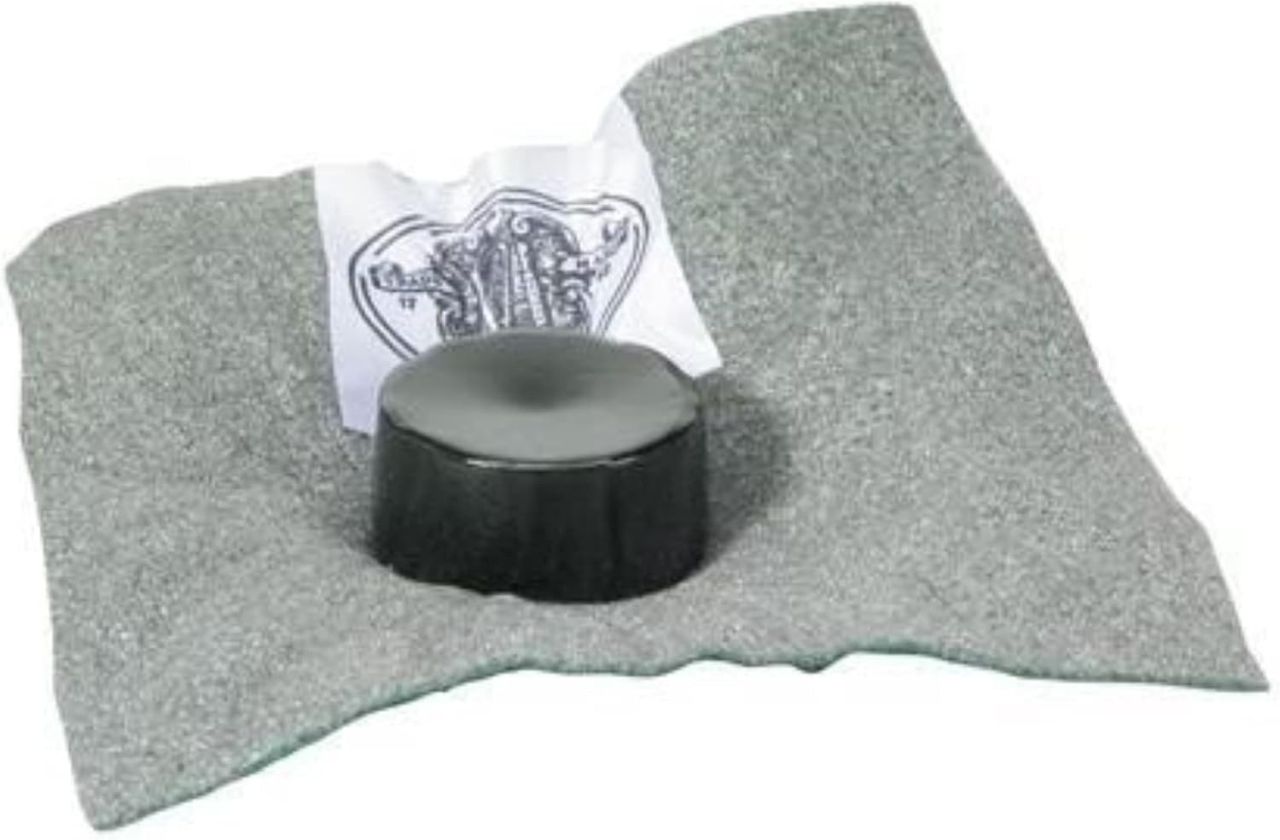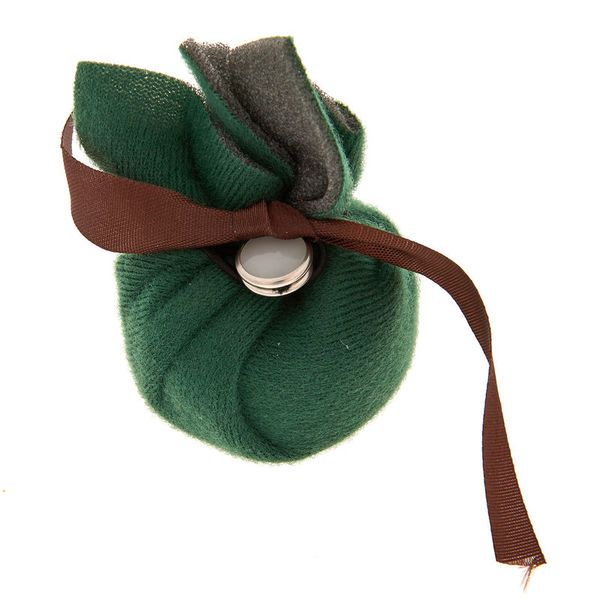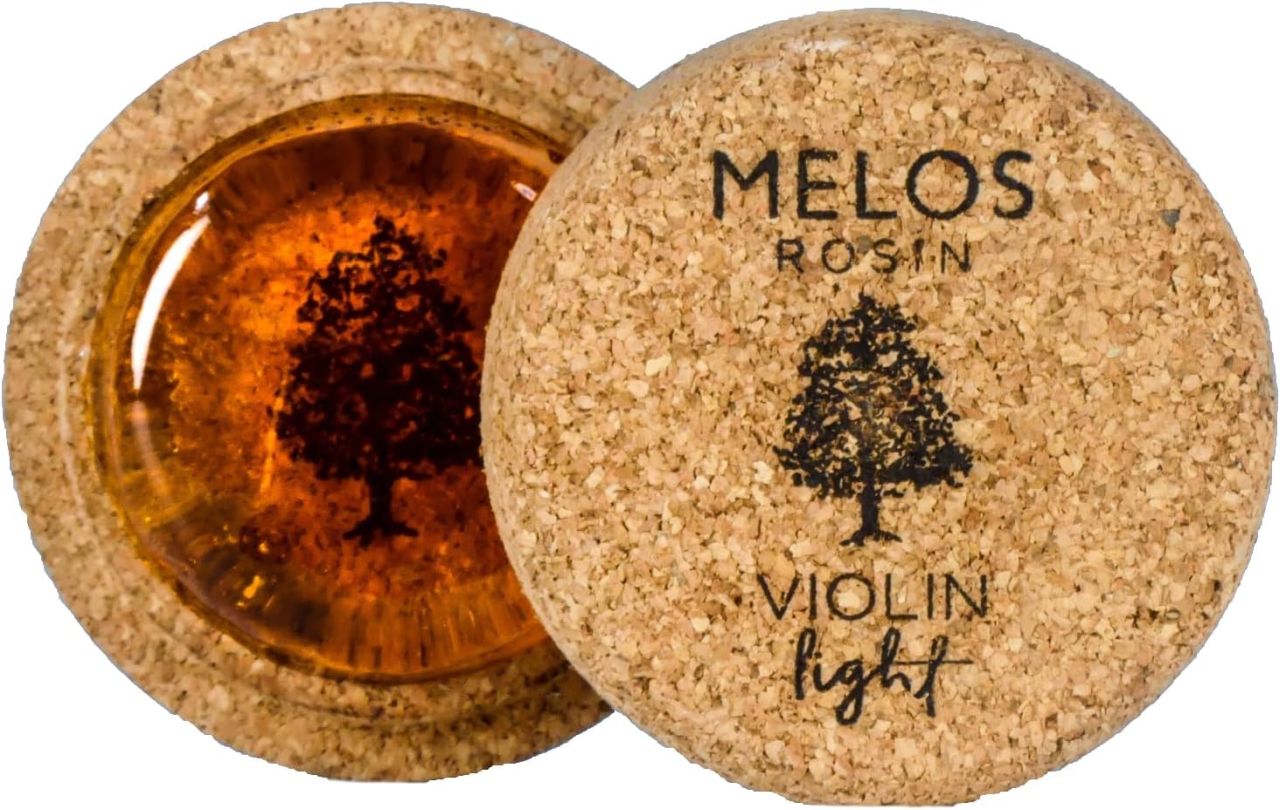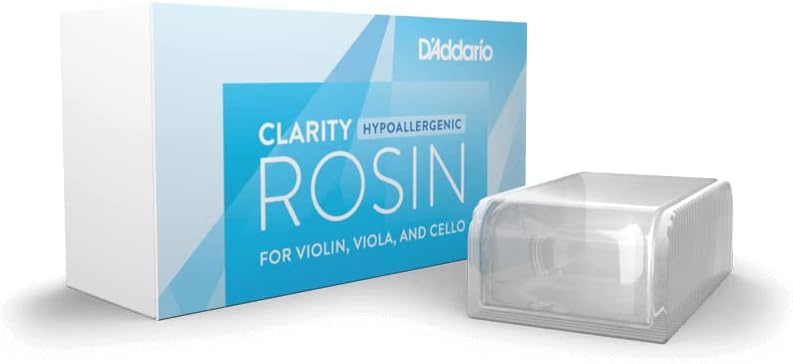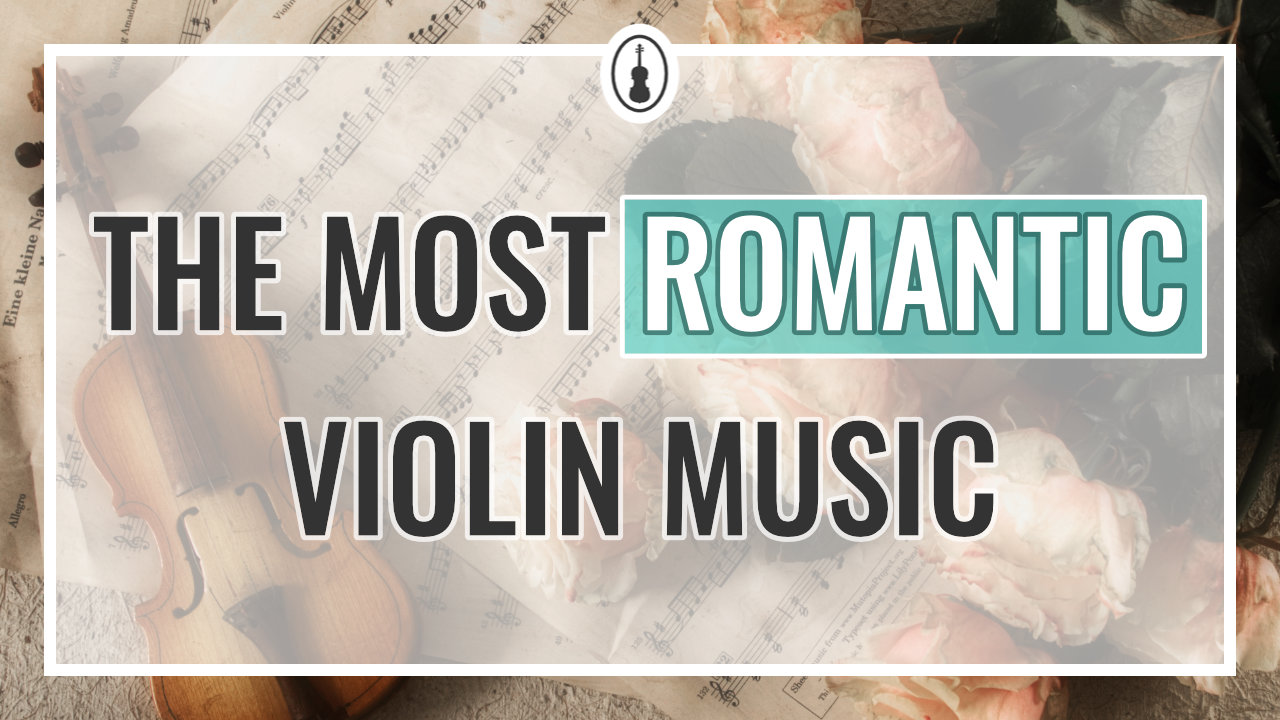An overview and buying guide of the best violin rosin
In addition to your violin and bow, rosin is one of the most important tools you need to actually play the violin! Rosin goes on your bow hair to give friction between the hair and strings, and to actually produce sound.
Different types of rosin can change the tone of your violin sound. A decent rosin will give more depth to your sound and make playing easier. There are even more nuances beyond that, which we’ll go over together!
Ready to experiment with violin rosin? Today I’m sharing what are the best violin rosins in my opinion, and why they may or may not work for you.
My Top 5 Picks: Best Violin Rosin
Let’s first go over my favorite rosins for different situations. Continue reading below for my full product reviews!
Best Budget Rosin
One of the best combinations of price and quality is Bernardal Rosin. At around $14, it’s a great rosin to try out. It’s used by amateur and professional violinists alike and yields great results.
Best Quality Rosin
The highest quality rosin is Leatherwood Bespoke Violin Rosin. This rosin is handmade in Australia, using high quality materials. You can customize the formula to create the exact sound and feel you’re looking for. This rosin is very expensive, but it’s generally regarded as the best rosin out there.
Best Rosin for Low Humidity
In low humidity situations, and likely in colder climates, I would choose Hill Dark Rosin. This is a dark, soft rosin that can give extra grip on the bow hair. Since this is a soft, sticky rosin, it doesn’t leave much dust behind.
Best Rosin for High Humidity
A great choice in high-humidity situations is Bernardel Rosin. This is a very popular choice among professional violinists, because it stays smooth, even in humid climates.
Best Hypoallergenic Rosin
The best hypoallergenic rosin on the market is Clarity by D’Addario. This is a clear rosin, made from synthetic hydrocarbon resin. This is a great product for those who find themselves allergic to traditional recipes!
Best Sustainable Rosin
Leatherwood’s EcoRosin is vegan, sustainably made, and they’re offsetting their CO2 emissions! Leatherwood violin rosin is highly regarded as one of the best on the market, and their EcoRosin is priced a bit lower than their regular line.
Before we jump into detailed violin rosin reviews, let’s discuss what the rosin is and what to consider when buying it.
What is Rosin Made of?
Most rosin is made from heated and solidified tree sap, sometimes additional ingredients are added such as beeswax. There’s also a hypoallergenic rosin made of synthetic hydrocarbon resin.
Violin rosin is a sticky substance that we spread on our bow hair to allow them to grip the strings and create sound. There are different rosins made by various brands that can affect your playing tone. There are some rosins that might give you a more powerful sound, some that could provide more grip and countless others!
You probably found a cake of rosin in your violin case when you started playing. The rosins that come with instruments are usually low quality, and will probably get you by as you start out on the violin. However, trying a different rosin can give you a better sound, and a new perspective on playing the violin!
Why Should I Upgrade My Rosin?
There are a few reasons why you might want to consider upgrading from the cheap rosin your violin came with:
- You aim for a different sound
Every rosin can give you a slightly different sound; just like new violin strings or a different bow can change up the tone of your playing. Every brand of rosin has a unique formula. The type of tree resin and extra materials added to the rosin will create different feels and sounds.
Even your violin and the strings you use will make each rosin sound a little different. A rosin that works for your violin, strings, and bow might not sound as good on your friend’s equipment, and vice versa.
Trying out multiple rosins is always a gamble, but there are a few rosins out there that are loved by many violinists all over the world. Generally speaking, these rosins are great to try first, since they have such good reviews!
You never know how much better your playing might sound with nicer rosin. If you’re looking to upgrade your tone, violin rosins are a great piece of the puzzle to experiment with.
- You need to adjust to low or high humidity levels
If you’re travelling with your violin to places with significantly different humidity levels or you have the four seasons in the place you live, you might want to change your violin rosin accordingly so that it doesn’t become too sticky to your bow and violin, and the bow has sufficient grip on the strings.
- You happen to be allergic to your current rosin
It might have happened that you or someone you live with is allergic to the rosin you’re currently using. Luckily, there’s a hypoallergenic solution available on the market as well! Read on to find out more about it.
How to Choose Rosin for Your Bow
Choosing a good rosin can feel like a difficult task if you don’t know what to look for, or what you want your tone to sound like. Here are a few tips when trying out violin rosins.
The effect rosin makes
Different rosins will produce slightly darker or brighter sounds, but the biggest change is usually the way your bow feels against the strings: whether it’s easier to grip, heavier, scratchy, or smooth.
The difference in tone is sometimes dramatic, but other times very slight. As you experiment with violin rosin, consider both the sound and the feel.
Considerations before buying
First, think about how you want your violin to sound. Do you want a bright tone? A darker sound? If you’re looking for a brighter sound, try a light rosin. If you want a dark sound, try darker rosin.
Next, take note of what kind of environment you live in. Is it hot and humid year-round? Do you experience all four seasons? Light rosins are most suited to hot, humid areas, because they stay solid even in those conditions. Dark rosins can melt and become too sticky in hot environments, so they’re best in cold climates. It’s a good idea to balance out the environment and type of rosin.
Then, consider how your bow feels as you play on the strings. Is it smooth, scratchy, or does it skate on top of the string? How do you want it to feel as you play? Dark rosins provide more grip between the bow and the string, but it can sometimes be a little too much. Light rosin can create a smooth sound, but it can also become scratchy if you use too much.
Judging a new rosin
- Remove the old rosin from your bow
Before trying a new rosin, make sure the bow has as little of your old rosin as possible. Either play until little to no sound comes from your bow, or you can clean the hair with a toothbrush to take off excess rosin.
- Rosin your bow as usual
Make sure the new rosin is producing dust. Sometimes a new cake of rosin takes a long time to “get started.” Either take the time to get the dust started, or you can score the surface with a knife or sandpaper.
- Don’t judge the rosin too soon
Make sure the rosin has actually started producing dust and is sticking to your bow. Consider whether you have enough rosin build-up on the bow, or if it might need a little more.
Sometimes you’ll notice a difference in your sound right away! Play with the new rosin for a little while to observe how it works in different playing situations, then judge it fully.
Now, let’s dive into the most popular violin rosins reviews!
6 Best Violin Rosins – Product Reviews
Let’s look at each rosin in depth to help you decide which product might be best for you.
1. Pirastro Goldflex Rosin
SPECIFICATION
Price: $21.63
Weight: 1.4 ounces
Color: Gold
REASONS TO BUY
+ Reliable
+ Works in most environments (dry, moderate, and humid)
+ Creates a smooth sound
REASONS TO AVOID
– Some experience allergies from the gold flecks
– If the rosin builds up on your instrument, the gold can damage the instrument’s varnish.
I personally use Pirastro Goldflex and recommend it to most of my students. I find that it works in most environments, and sounds good on almost all instruments!
This rosin is smooth, and not too sticky. The gold flecks within help achieve a smooth grip on the string, but some players experience some allergies to it.
Overall, this is a versatile, easy-to-use rosin.
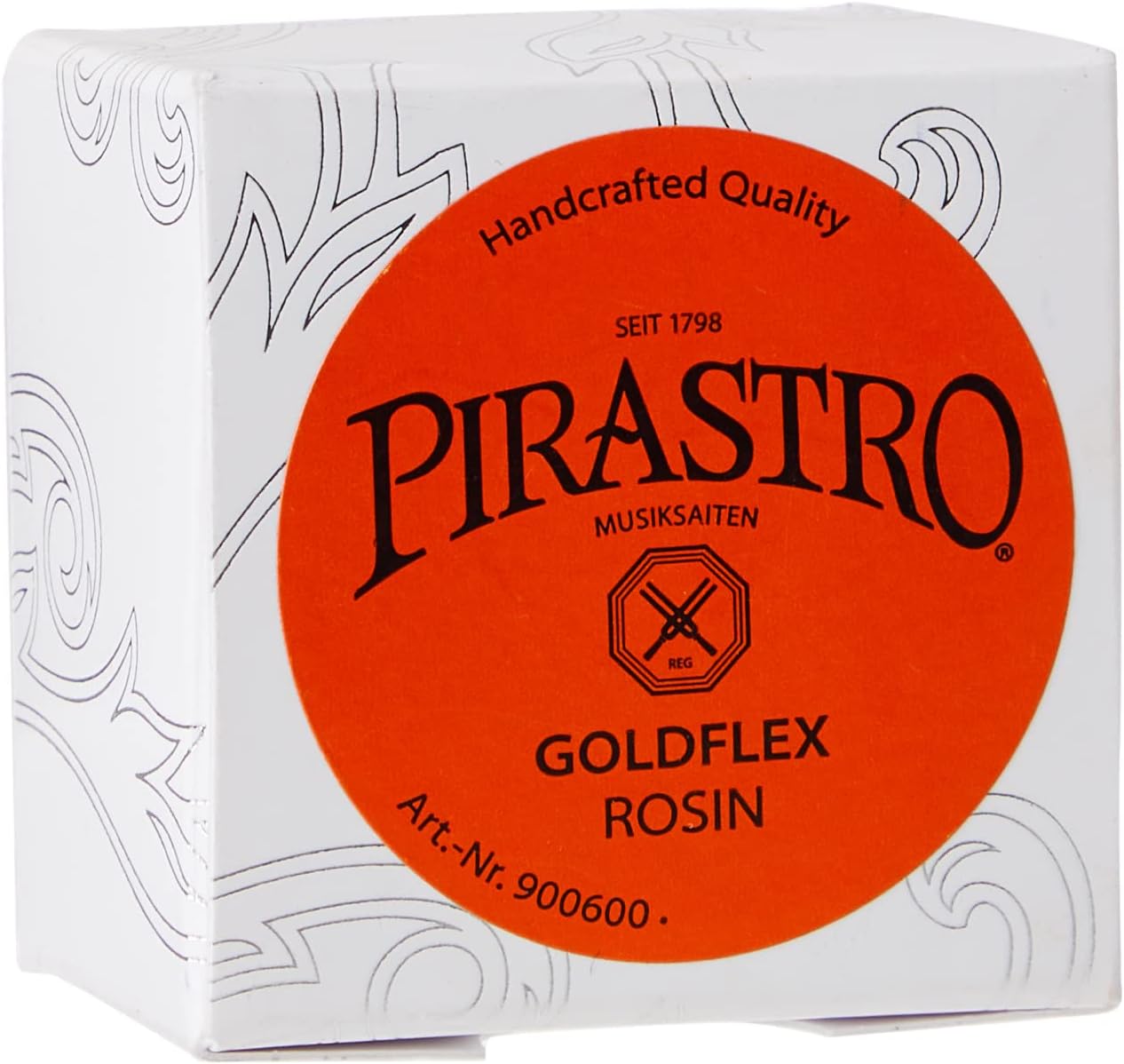
Pirastro Goldflex Rosin
Support us for more FREE content No extra costs for you Recommended by Violinists
2. Bernardel Rosin
SPECIFICATION
Price: $14.50
Weight: 1.13 ounces
Color: Amber
REASONS TO BUY
+ Works well in temperate to humid locations
+ Gives a smooth feeling
+ Not very dusty
+ Great value for the price
REASONS TO AVOID
– Doesn’t work as well in dry environments
– The pouch it comes in doesn’t fit in all violin cases
One of the most popular, well-loved rosins out there is Bernardel. This rosin is handmade in France, and it’s a family recipe that’s been handed down since the early 20th century.
Bernardel rosin is amber-colored and generally works best in temperate to humid environments. Many violin players find that this rosin gives a smooth sound, without leaving much dust behind.
This rosin is averagely priced, making it a great option to try!
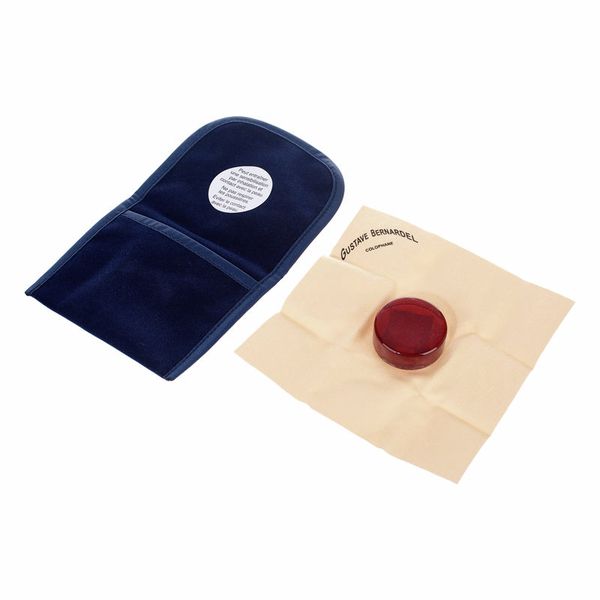
Bernardel Rosin
Support us for more FREE content No extra costs for you Recommended by Violinists
3. Leatherwood Bespoke Rosin
SPECIFICATION
Price: $73.70
Weight: 0.1 pounds
Color: Dark
REASONS TO BUY
+ Great for advanced players and professionals who are looking to create very specific, nuanced sounds
+ Ethically made
+ Handmade rosin
+ Higher quality rosin
+ A little goes a long way, and one cake should last 2-5 years
REASONS TO AVOID
– Very expensive
– May not be worth the cost for many violinists
Many violinists regard Leatherwood as the very best violin rosin. This is one of the most expensive rosins out there, and the most expensive one I’m sharing with you. This is used and loved by many professional players, and you can customize the rosin formula to achieve the sound and feeling you desire.
Leatherwood rosin is handmade in Australia, and the brand is very sustainable and eco-friendly. They even offer a special eco-friendly rosin, which is vegan and biodegradable. It’s also cheaper than their Bespoke line!
Leatherwood offers a few formulas in their bespoke line: supple, crisp, and various mixes of the two. The supple rosin is meant to produce a smooth, warm, and rich sound. Attacks will be less harsh, and the bow should feel smooth. The crisp rosin will give more grip, making spiccato bow strokes easier, and with a more nuanced tone. From there, you can choose a formula that mixes the two to create the kind of sound you want.
While many violinists can hear differences in the feel of the bow and the attack of their notes, the difference can sound very minimal to ears that are not highly attuned to string playing. For this reason, Leatherwood violin rosin probably won’t be worth it unless you’re playing at a very advanced level.
Overall, this is a well-loved handmade violin rosin and can improve an instrument’s tone. Because of its reputation and the brand’s sustainability, I wanted to be sure to include it in this buying guide!
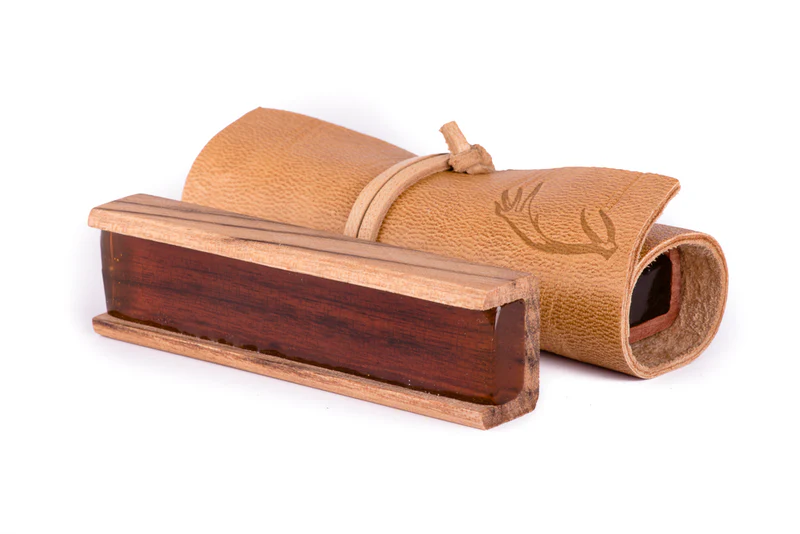
Leatherwood Bespoke Rosin
Support us for more FREE content No extra costs for you Recommended by Violinists
4. Hill Dark Rosin
SPECIFICATION
Price: $21.54
Weight: 0.64 ounces
Color: Dark
REASONS TO BUY
+ Tends to work very well in dry, cold climates
+ Will give a good grip in low-humidity situations
+ Used and loved by many violin players
REASONS TO AVOID
– Dark rosin isn’t great in warmer climates with humidity
– If you buy this to use in the winter, you’ll want to buy a lighter rosin for the rest of the year.
Hill’s is a beloved rosin brand, and its dark rosin is one of the best. This rosin is slightly softer than most others to give your bow more grip against the string.
This rosin is great for cold, dry climates. If you live in an area that is cold most of the year or experience extreme winters, this is a great violin rosin to try!
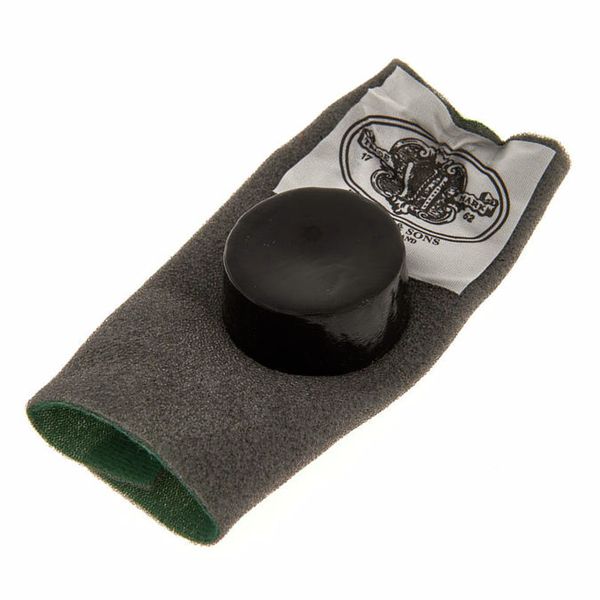
Hill Dark Rosin
Support us for more FREE content No extra costs for you Recommended by Violinists
5. Melos Light Violin Rosin
SPECIFICATION
Price: $19.90
Weight: 2.08 ounces
Color: Light
REASONS TO BUY
+ Reliable light rosin for warm climates
+ Gives a smooth tone
+ Used and loved by many violinists
REASONS TO AVOID
– May not be the best choice if you’re in a cold, dry climate
– The packaging feels a little awkward when rosining the bow hair
– Using too much will kick up a lot of rosin dust
To contrast my previous recommendation of a darker rosin, here’s a great light rosin for you to try! Melos is a trusted rosin brand, used by many violinists all over the world.
Melos Light is a light rosin that isn’t very sticky and helps to give you a smooth sound. It still stays hard and compact even in hot, humid weather.
This rosin is made from Greek pine trees and has a lovely pine smell when you use it. If you apply the right amount, you might notice just a little powder, but if you use too much, you’ll experience a lot of excess rosin dust. Apply it carefully, and this light rosin should work beautifully!
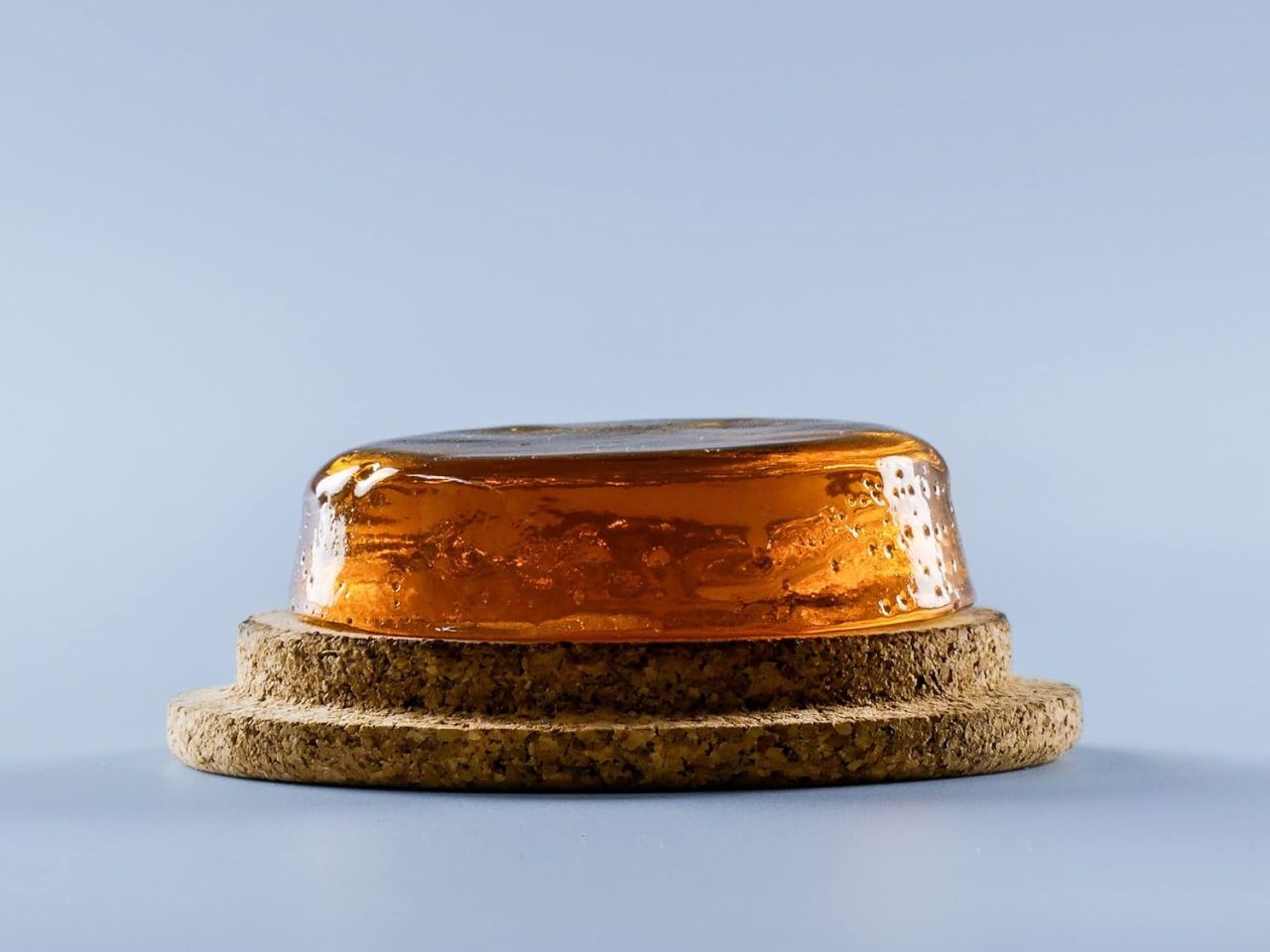
Melos Light Violin Rosin
Support us for more FREE content No extra costs for you Recommended by Violinists
6. Clarity Hypoallergenic Rosin
SPECIFICATION
Price: $14.10
Weight: 0.6 ounces
Color: Clear
REASONS TO BUY
+ The most popular hypoallergenic rosin
+ Made by a reputable brand
+ If you use this, you shouldn’t experience allergies!
REASONS TO AVOID
– This rosin can give a scratchy, too-bright tone on some violins
If you find that rosin makes you itchy or sneezy, you might want to try a hypoallergenic variety! Clarity by D’Addario is the best hypoallergenic rosin on the market. D’Addario is a trusted instrument brand, and they boast that Clarity works the same as natural rosin and that it’ll work in all climates.
Clarity rosin is made of synthetic hydrocarbon resins and has great reviews from violinists who previously experienced allergies from other rosins.
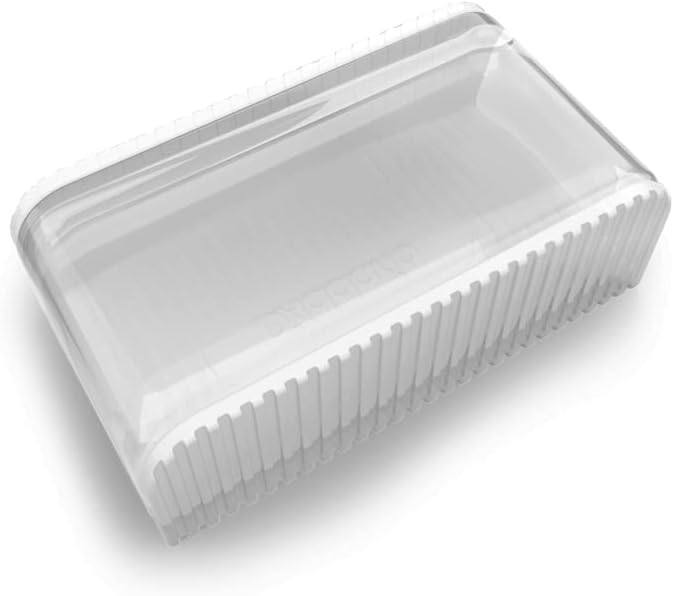
Clarity Hypoallergenic Rosin
Support us for more FREE content No extra costs for you Recommended by Violinists
Other Ways to Upgrade Your Violin Kit
Experimenting with new rosins is, to me at least, a fun aspect of playing the violin! A new rosin can change the quality of your sound, so if you’re looking for something different, rosin can make all the difference.
If you’re wondering what else can improve the sound of your violin, make sure to take a look at my best tips in the post “How to make your cheap violin sound better.”
Yet another way to make an upgrade to your violin kit and feel more comfortable playing is investing in a good shoulder rest.
After you play for a while, you’ll probably think of a better violin bow, a new string set, or maybe a case more suitable for your needs.
I truly hope you like my reviews, and I wish you good luck practicing and exploring all the amazing musical opportunities that are waiting for you!

